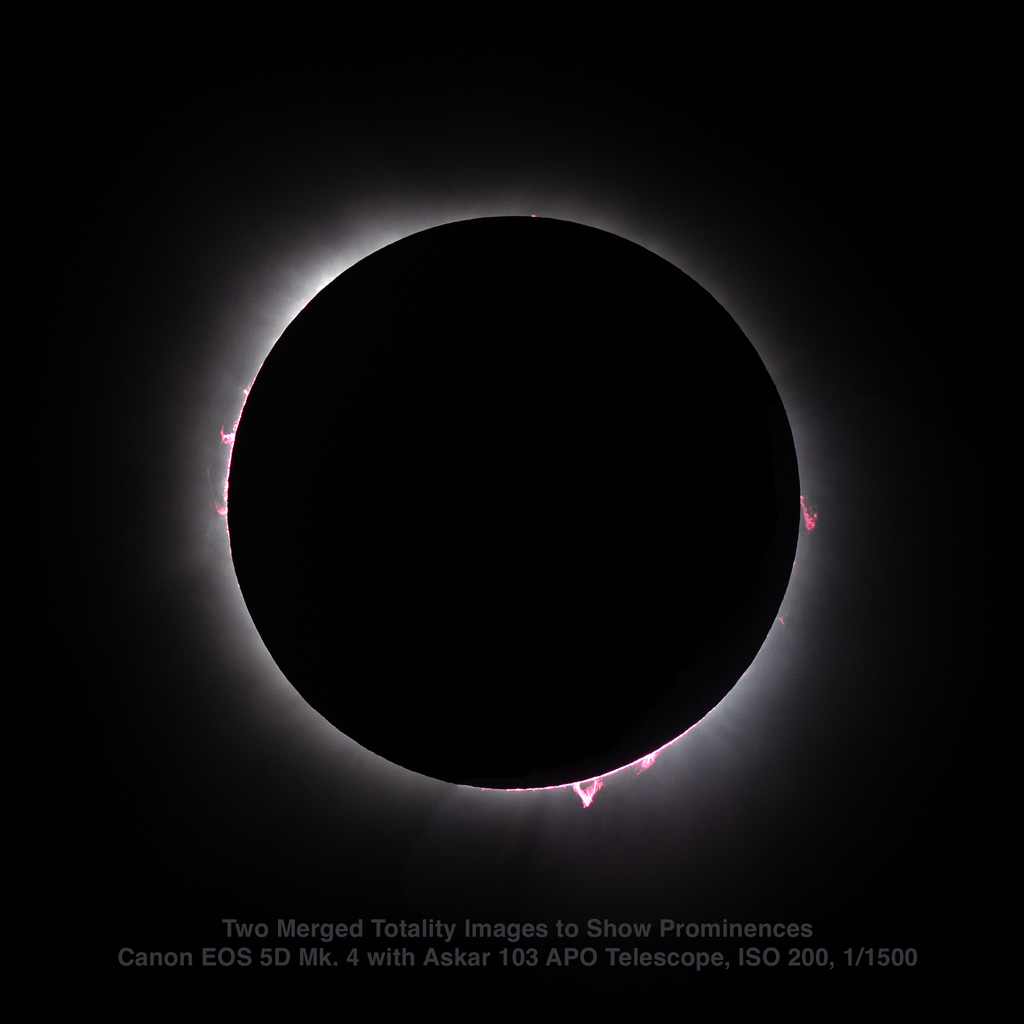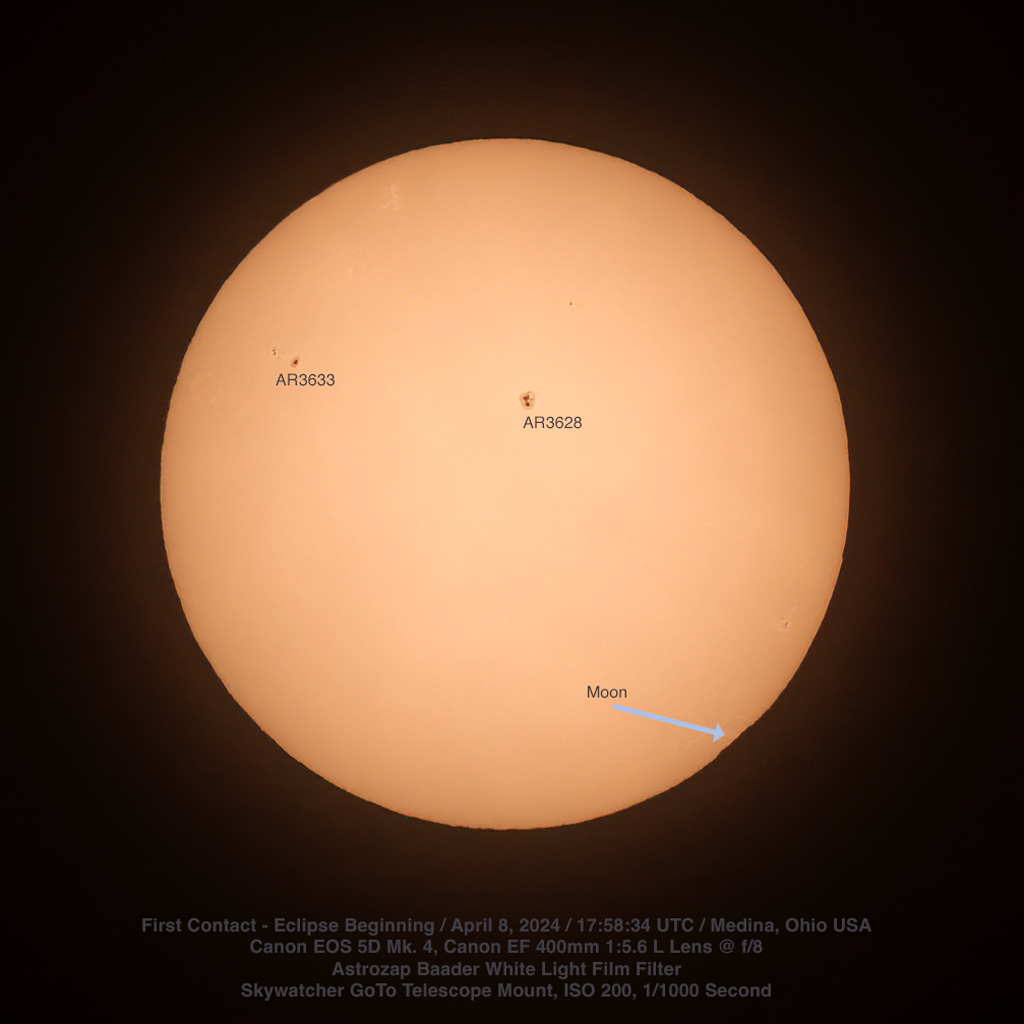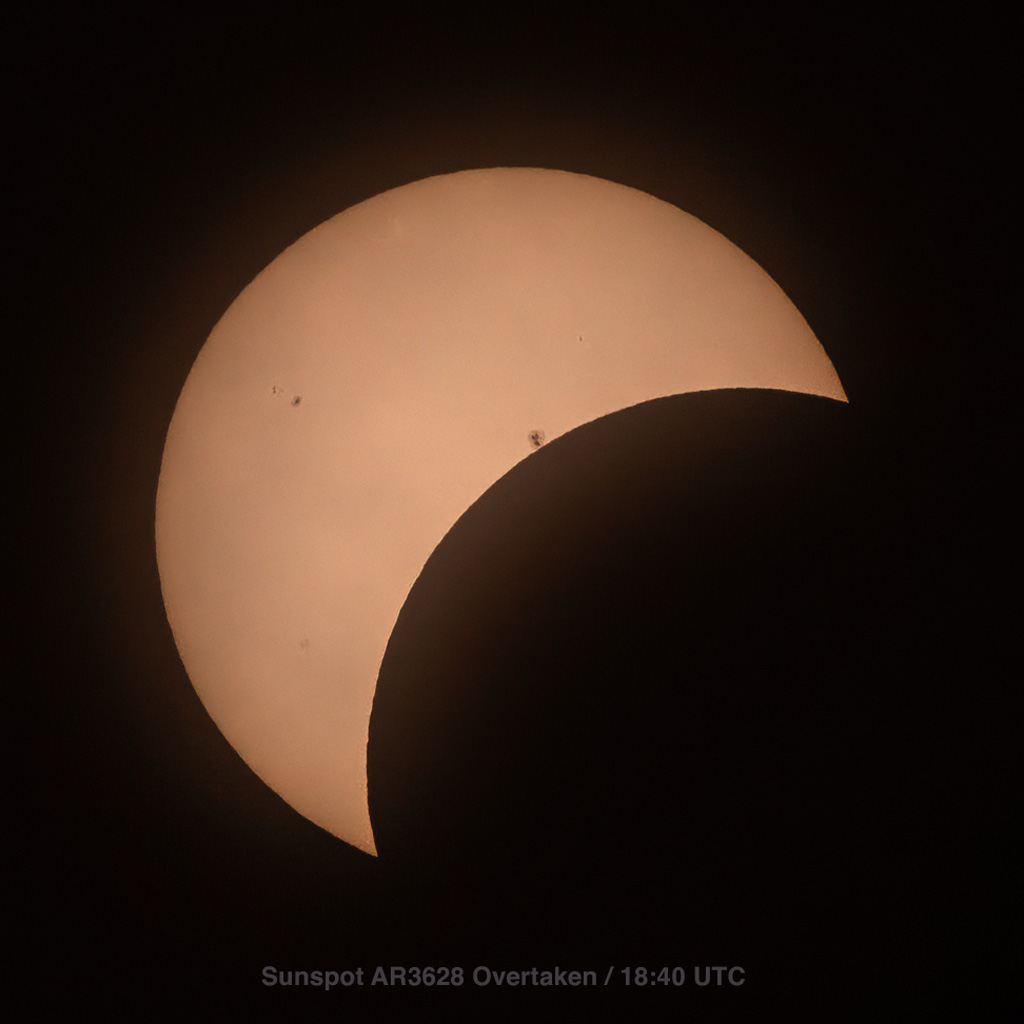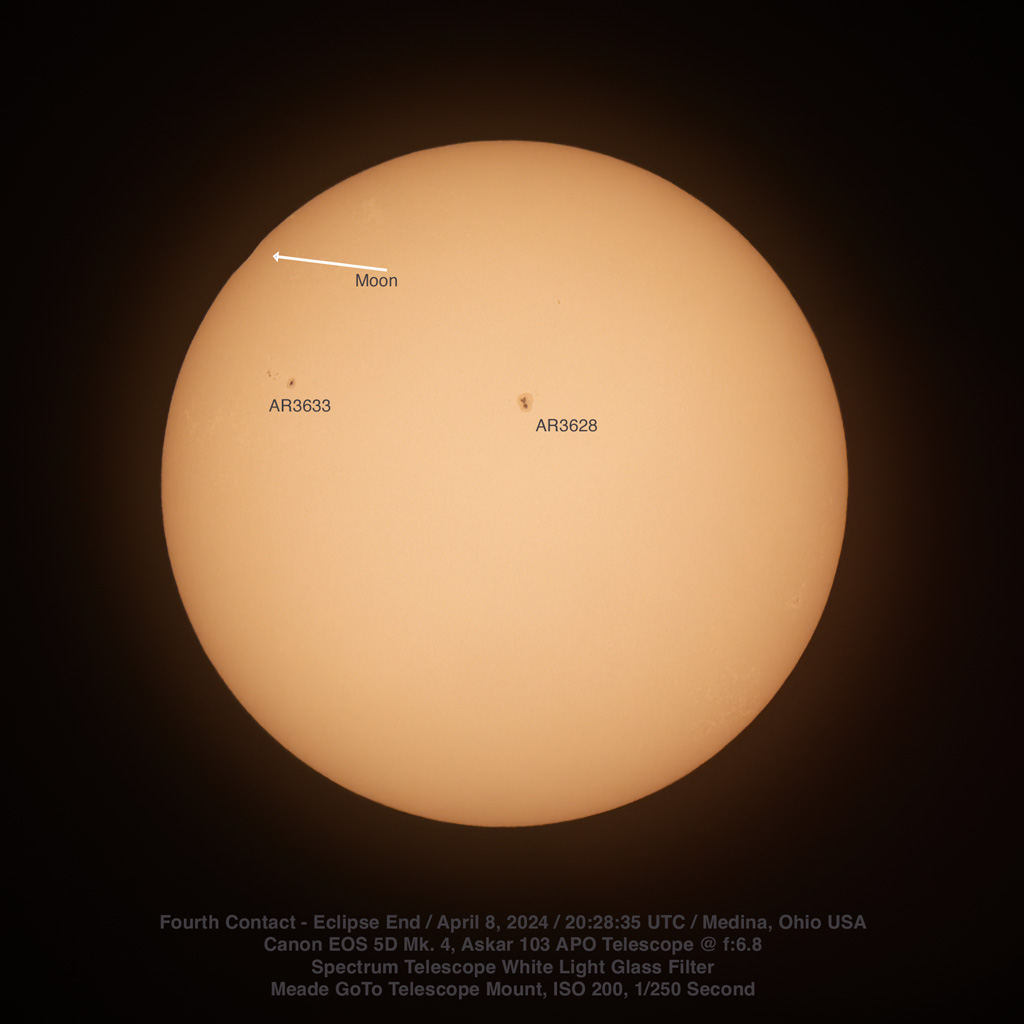
While we very much wanted to view and photograph Sun’s corona during the April 8 total solar eclipse, a blanket of high, thin cloud covered the area blocking faint details. We were, however, able to observe and image the bright inner corona and prominences (“proms”) along the rim of the eclipsed Sun and what a show it was.
Sun is in the active phase of its 11-year cycle and, during totality, prominences were expected and seen in various sizes and at several sites around the rim. The largest was easily spotted with the unaided eye, causing questions from casual observers as it brightly shined at about the six o’clock position of the eclipse ring as viewed from North America. We were delighted with the images of proms that we were able to acquire!
As Moon drifted across Sun during totality it, in turn, covered and exposed different regions of Sun’s limb. To give a fuller impression of prominences seen, we grafted two of our images from totality into one picture; one image was recorded just as totality began, the other as totality was about to end. The resulting picture is not a view one would have had but does correctly illustrate the position and visual size of the proms.

Observers in Northeast Ohio were fortunate. Although the morning began with heavy cloud cover, skies cleared and allowed decent viewing of the eclipse in its entirety. Temperature drops were easily felt as bright daylight transitioned to an eerie twilight. As totality began, cheers of awe could be heard from gathered eclipse watchers at a nearby organized event. Automatic street lights illuminated. A robin was heard singing its evening song. Sunset colors lit the horizon about three-quarters of the way around us. In the southwest, beneath the eclipsed Sun, the horizon appeared dark. And then, as bright sunlight returned, first via a brilliant crescent, then by an expanding and warming solar disk, it was over. Those we spoke with were delightedly awestruck having had the experience of a lifetime.
Following are several images of Sun as the eclipse began, during the partial phase, and as it ended. Times are expressed as UTC and were recorded automatically by the camera, set via GPS. Observers in different areas will have seen times that differed from ours and each others due to parallax effects, Moon being much closer to Earth than is Sun.



